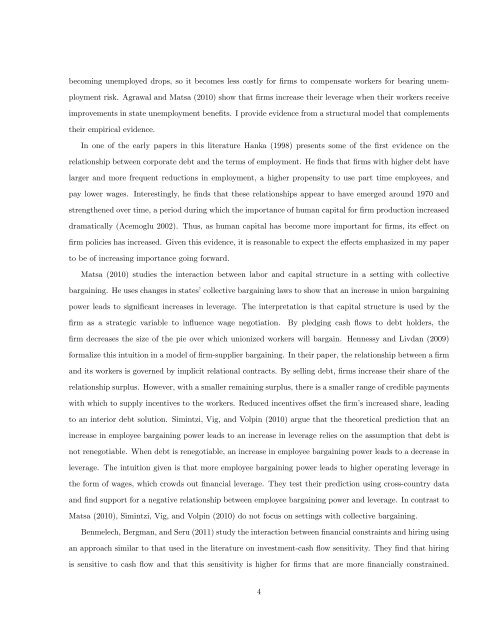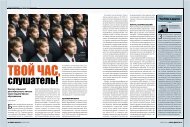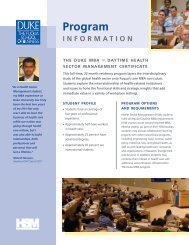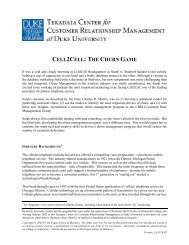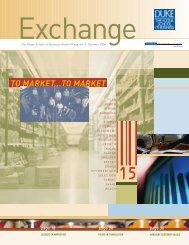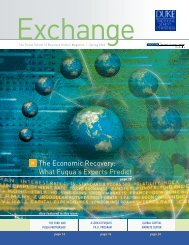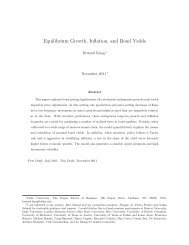A Structural Model of Human Capital and Leverage - Duke ...
A Structural Model of Human Capital and Leverage - Duke ...
A Structural Model of Human Capital and Leverage - Duke ...
Create successful ePaper yourself
Turn your PDF publications into a flip-book with our unique Google optimized e-Paper software.
ecoming unemployed drops, so it becomes less costly for firms to compensate workers for bearing unem-<br />
ployment risk. Agrawal <strong>and</strong> Matsa (2010) show that firms increase their leverage when their workers receive<br />
improvements in state unemployment benefits. I provide evidence from a structural model that complements<br />
their empirical evidence.<br />
In one <strong>of</strong> the early papers in this literature Hanka (1998) presents some <strong>of</strong> the first evidence on the<br />
relationship between corporate debt <strong>and</strong> the terms <strong>of</strong> employment. He finds that firms with higher debt have<br />
larger <strong>and</strong> more frequent reductions in employment, a higher propensity to use part time employees, <strong>and</strong><br />
pay lower wages. Interestingly, he finds that these relationships appear to have emerged around 1970 <strong>and</strong><br />
strengthened over time, a period during which the importance <strong>of</strong> human capital for firm production increased<br />
dramatically (Acemoglu 2002). Thus, as human capital has become more important for firms, its effect on<br />
firm policies has increased. Given this evidence, it is reasonable to expect the effects emphasized in my paper<br />
to be <strong>of</strong> increasing importance going forward.<br />
Matsa (2010) studies the interaction between labor <strong>and</strong> capital structure in a setting with collective<br />
bargaining. He uses changes in states’ collective bargaining laws to show that an increase in union bargaining<br />
power leads to significant increases in leverage. The interpretation is that capital structure is used by the<br />
firm as a strategic variable to influence wage negotiation. By pledging cash flows to debt holders, the<br />
firm decreases the size <strong>of</strong> the pie over which unionized workers will bargain. Hennessy <strong>and</strong> Livdan (2009)<br />
formalize this intuition in a model <strong>of</strong> firm-supplier bargaining. In their paper, the relationship between a firm<br />
<strong>and</strong> its workers is governed by implicit relational contracts. By selling debt, firms increase their share <strong>of</strong> the<br />
relationship surplus. However, with a smaller remaining surplus, there is a smaller range <strong>of</strong> credible payments<br />
with which to supply incentives to the workers. Reduced incentives <strong>of</strong>fset the firm’s increased share, leading<br />
to an interior debt solution. Simintzi, Vig, <strong>and</strong> Volpin (2010) argue that the theoretical prediction that an<br />
increase in employee bargaining power leads to an increase in leverage relies on the assumption that debt is<br />
not renegotiable. When debt is renegotiable, an increase in employee bargaining power leads to a decrease in<br />
leverage. The intuition given is that more employee bargaining power leads to higher operating leverage in<br />
the form <strong>of</strong> wages, which crowds out financial leverage. They test their prediction using cross-country data<br />
<strong>and</strong> find support for a negative relationship between employee bargaining power <strong>and</strong> leverage. In contrast to<br />
Matsa (2010), Simintzi, Vig, <strong>and</strong> Volpin (2010) do not focus on settings with collective bargaining.<br />
Benmelech, Bergman, <strong>and</strong> Seru (2011) study the interaction between financial constraints <strong>and</strong> hiring using<br />
an approach similar to that used in the literature on investment-cash flow sensitivity. They find that hiring<br />
is sensitive to cash flow <strong>and</strong> that this sensitivity is higher for firms that are more financially constrained.<br />
4


